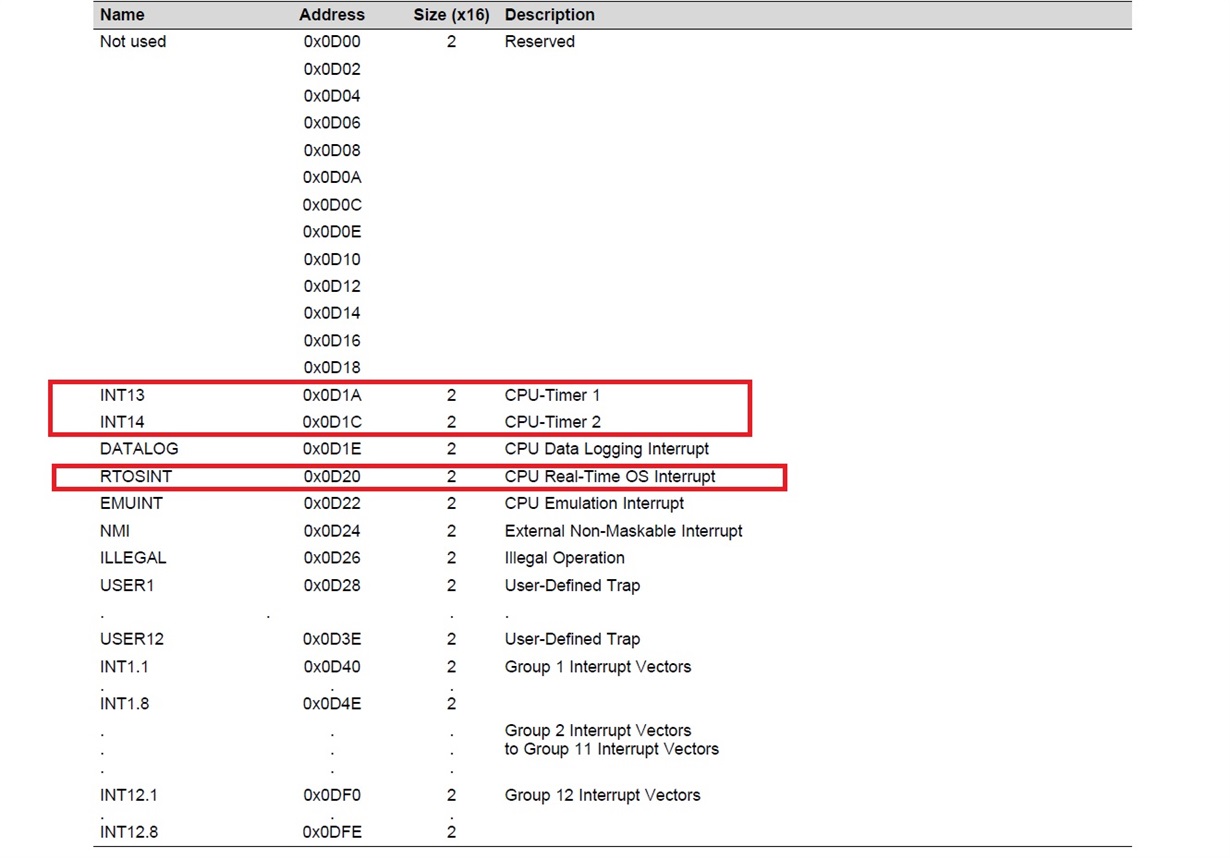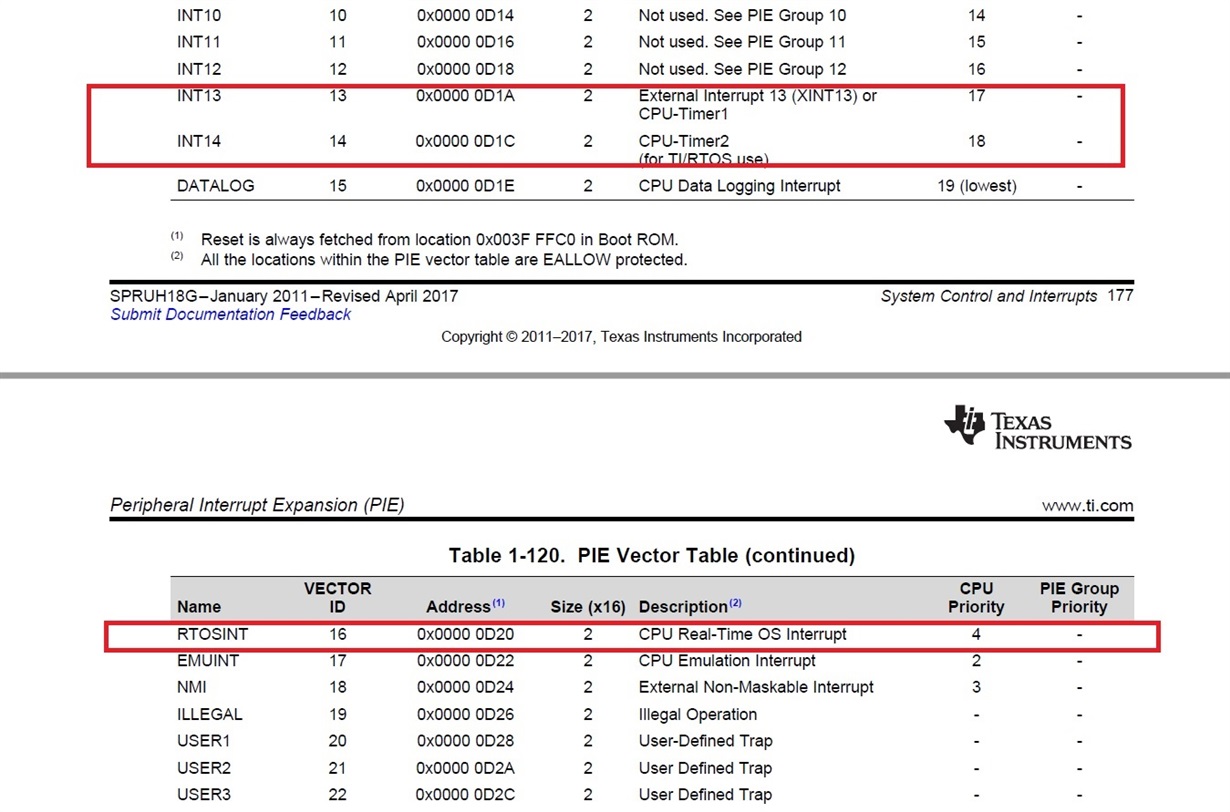Other Parts Discussed in Thread: SYSBIOS
Tool/software: TI-RTOS
Hello All,
Is it possible to use the RTOSINT that exists for the TMS320F28069 in a non-TI-RTOS and/or non-Sys-BIOS application?
I did a search; didn't find much. Looking at the SYS-BIOS code didn't yield a lot either; maybe I've been looking in the wrong place.
Thanks In Advance,
John W.








